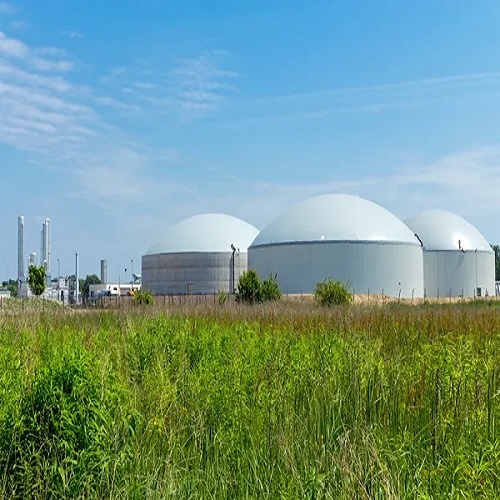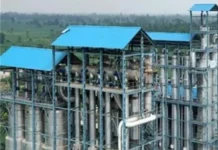Bio-compressed biogas (Bio-CBG) and biomass collection are transforming organic waste into clean, renewable energy, offering a win-win for the environment, the sugar industry, and the nation. The Indian government’s recent budget announcements have turbocharged this green shift, with provisions aimed at overcoming challenges and accelerating Bio-CBG adoption. Let’s delve deeper into how these strategic investments are fueling a greener future.
Budgeting for a Bio-Revolution:
The 2024 budget unveils several key measures to empower Bio-CBG:
Biomass Procurement Boost: Recognizing the crucial role of biomass collection, the budget introduces financial assistance for procuring machinery. This eases funding hurdles for entrepreneurs, paving the way for wider Bio-CBG project establishment.
Bio-Manufacturing & Bio-Foundry: A new scheme promotes environment-friendly alternatives like biodegradable polymers, bio-plastics, and bio-pharmaceuticals, opening up lucrative avenues for Bio-CBG utilization.
GOBARdhan Expansion: Building upon the 2023 plan, the budget includes 500 new “waste to wealth” plants under GOBARdhan. This translates to 200 CBG plants, including 75 in urban areas, and 300 community or cluster-based plants, with a total investment of Rs 10,000 crore. This massive push expands access and encourages decentralized production.
Mandatory Blending & Support: The 2023 budget’s 5% CBG mandate for natural and biogas marketers remains active, ensuring wider market penetration. Additionally, fiscal support for biomass collection and biomanure distribution further incentivizes sustainable practices.
SATAT Support: The government continues to back SATAT (Sustainable Alternative Towards Affordable Transportation) with various benefits, including central financial assistance for CBG/biogas plants, additional support for municipal solid waste-based plants, and policy guidelines for co-mingling CBG with natural gas. This multi-pronged approach bolsters the overall bioenergy ecosystem.
Sweetening the Deal for the Sugar Industry:
Beyond national benefits, Bio-CBG offers a sweet deal for the sugar industry:
New Revenue Stream: Selling CBG as a clean fuel creates a reliable income source, stabilizing finances and mitigating market volatility.
Waste Management Magic: Bio-CBG transforms press-mud, bagasse, and spent wash into valuable products, minimizing waste disposal burdens and environmental impact.
Sustainable Ally: Aligning with national bioenergy goals, sugar mills embrace a sustainable future, enhancing their green credentials.
Rural Upliftment: Biomass collection creates employment opportunities for farmers, boosting their income and contributing to rural development.
Soil Fertility Fix: Digestate, a byproduct of CBG production, serves as organic fertilizer, enriching soil health and boosting crop yields.
Beyond Sugar: A National Sweetener:
The benefits of Bio-CBG extend far beyond the sugar industry:
Pollution Reduction: Bio-CBG tackles the issue of waste disposal in open fields or water bodies, curbing pollution and greenhouse gas emissions.
Circular Economy Champion: Bio-CBG promotes a circular economy by converting waste into valuable products, supporting bio-manufacturing and bio-foundry sectors.
Biofuel Targets Achieved: Bio-CBG production from sugarcane waste contributes to achieving the ethanol blending and biofuel production targets set by the National Biofuel Policy 2018, leading to energy security and reduced dependence on fossil fuels.
Together, We Rise:
Harnessing the full potential of Bio-CBG requires a collaborative effort:
Government Steadfastness: Continued implementation of budget provisions, coupled with R&D initiatives, is key to sustaining momentum.
Industry Participation: Sugar mills need to actively participate in the Bio-CBG sector, leveraging their existing infrastructure and resources to establish CBG plants and supply chains.
Technology Innovation: Technology providers need to innovate and offer cost-effective and efficient solutions for Bio-CBG production and distribution, catering to diverse feedstocks and scales.
Market Development: Market players need to create awareness and demand for Bio-CBG as a clean and affordable fuel, offering attractive pricing and incentives to consumers.
Stakeholder Engagement: Stakeholders across the value chain, including farmers, entrepreneurs, investors, regulators, and civil society, need to engage and collaborate to ensure the success of Bio-CBG projects.
Conclusion:
Bio-CBG is a promising and viable option for transforming organic waste into clean and renewable energy, benefiting the environment, the sugar industry, and the nation. The Indian government’s budgetary support has given a boost to this sector, creating opportunities and incentives for various stakeholders. By working together, we can realize the vision of a sugar-fueled future, powered by Bio-CBG
Disclaimer: The views and opinions expressed in the article by Dilip Patil, Managing Director of Samarth SSK Ltd., are solely his own.












